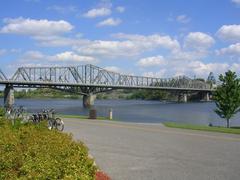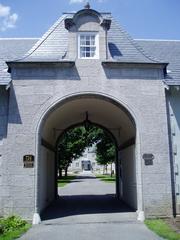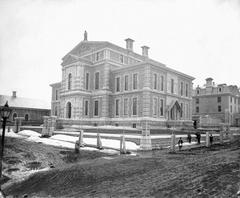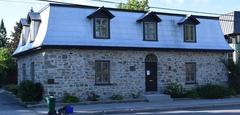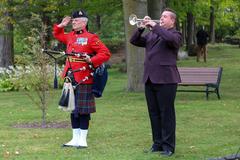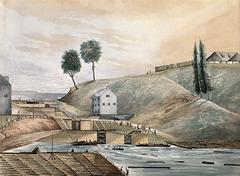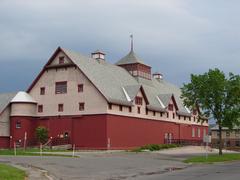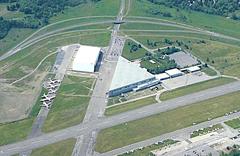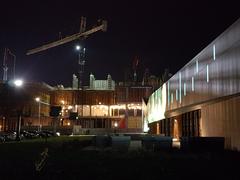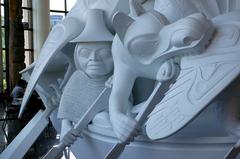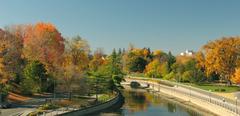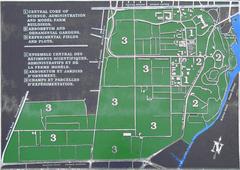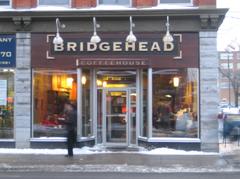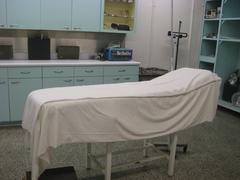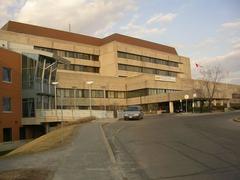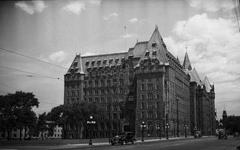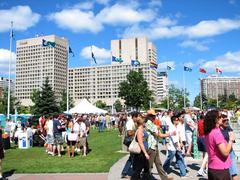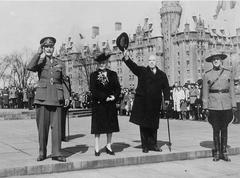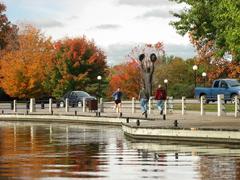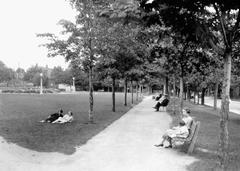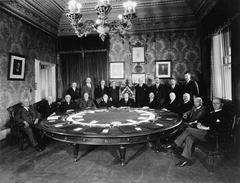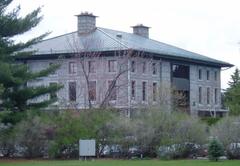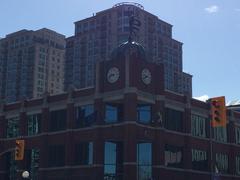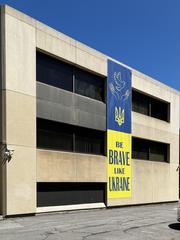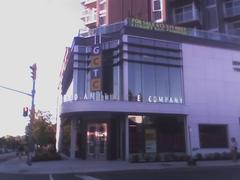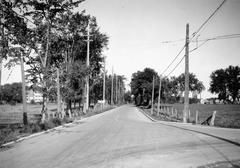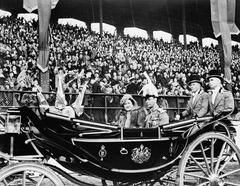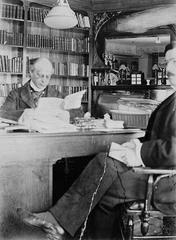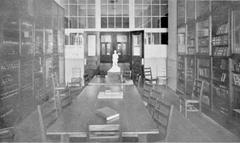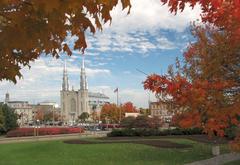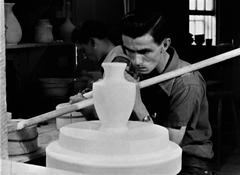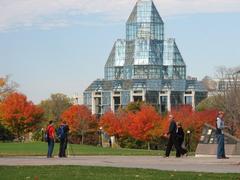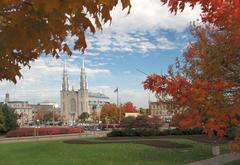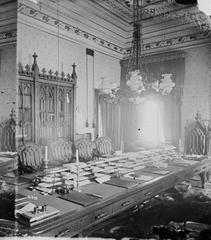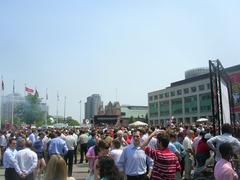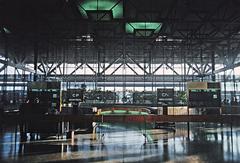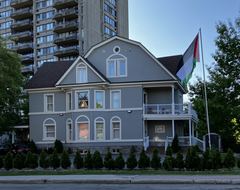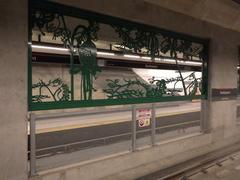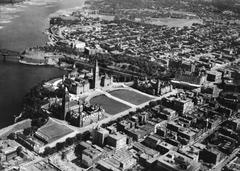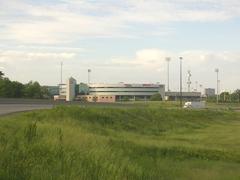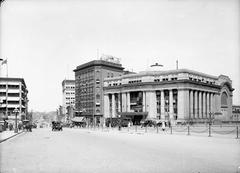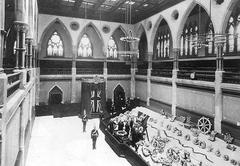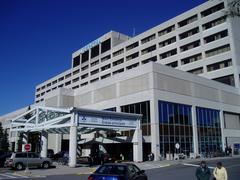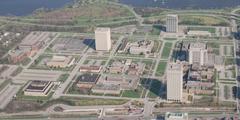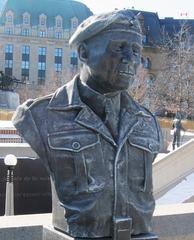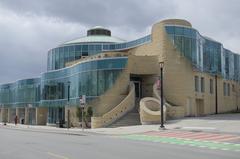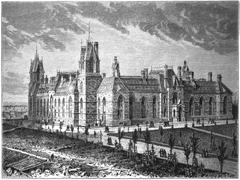Rideau Station Visiting Hours, Tickets, and Ottawa Historical Sites Guide
Date: 04/07/2025
Introduction: The Significance of Rideau Station in Ottawa
Nestled in the heart of Ottawa, Rideau Station is a pivotal gateway to the city’s vibrant downtown, historic landmarks, and cultural institutions. This underground rapid transit station on Ottawa’s O-Train Confederation Line (Line 1) provides residents and visitors with efficient, modern, and accessible transportation while connecting them to Ottawa’s rich historical tapestry. The area surrounding Rideau Station is steeped in heritage—from the traditional lands of the Algonquin Anishinaabe peoples to the engineering marvel of the 19th-century Rideau Canal (Britannica; Rideau Heritage Route).
As the deepest station in Ottawa’s transit network, Rideau Station boasts innovative engineering and seamless integration with the adjacent Rideau Centre and nearby attractions such as Parliament Hill, ByWard Market, and the UNESCO World Heritage-listed Rideau Canal (Capital Current; Ottawa Tourism). The station is fully accessible, with elevators, tactile guidance paths, and clear signage ensuring a comfortable experience for all visitors (OC Transpo).
More than just a transit stop, Rideau Station supports Ottawa’s economic vitality, urban sustainability, and cultural vibrancy. It links retail, hospitality, and entertainment venues while helping to reduce downtown congestion and promote active transportation (City of Ottawa Community Design Plans). Whether you’re a tourist, commuter, or history enthusiast, this guide provides essential details on visiting hours, ticketing, accessibility, nearby attractions, and practical travel tips for an unforgettable Ottawa experience (Visit Rideau Canal; Ottawa Tourism).
Table of Contents
- Historical Background: The Origins of the Rideau Area
- Rideau Street and the Evolution of Transit
- Rideau Station Today: Your Gateway to Ottawa
- Nearby Attractions and Experiences
- Architectural and Engineering Highlights
- Connectivity and Urban Impact
- Safety, Maintenance, and Sustainability
- Top Ottawa Historical Sites and Attractions Near Rideau Station
- FAQ
- Plan Your Visit
- References
Historical Background: The Origins of the Rideau Area
Indigenous Heritage and Early European Influence
Long before modern infrastructure, the Ottawa area was home to the Algonquin Anishinaabe peoples, who used the river and waterways for transportation and trade. The name “Rideau,” meaning “curtain” in French, was inspired by the appearance of the Rideau Falls, first named by early French explorers (Britannica).
Following the War of 1812, British authorities sought to secure transportation and defense routes, leading to rapid European settlement. The area that is now Rideau Street was once dense forest and wetlands, gradually transformed by urban development (Rideau Heritage Route).
The Rideau Canal: Engineering Feat and Growth Driver
Constructed from 1827 to 1832 under Lieutenant-Colonel John By, the Rideau Canal was built as a military supply route to connect Montreal and Kingston, bypassing the vulnerable St. Lawrence River (Visit Rideau Canal). Thousands of workers, including many Irish and French Canadian immigrants, faced challenging and dangerous conditions to complete the canal.
The canal’s completion spurred Ottawa’s growth, transforming Rideau Street into a major artery for commerce and transportation (Britannica).
Rideau Street and the Evolution of Transit
From Horse-Drawn Trams to Electric Streetcars
By the late 19th century, Rideau Street became a hub for Ottawa’s commerce and public transit. Horse-drawn trams began operating in 1870, succeeded by electric streetcars in 1894, which improved connectivity throughout the city (Historic Ottawa). The arrival of Union Station in 1912 further elevated the area’s prominence (City of Ottawa PDF).
Transition to Modern Transit
As Ottawa modernized, streetcars were replaced by buses, and rail lines were relocated to alleviate downtown congestion (City of Ottawa PDF). The creation of the Colonel By Parkway along the canal’s edge pays tribute to the canal’s chief engineer (Rideau Township History).
Rideau Station Today: Your Gateway to Ottawa
Location and Accessibility
Rideau Station is located underground beneath Rideau Street, adjacent to the Rideau Centre and close to ByWard Market and Parliament Hill. It is a key stop on the Confederation Line, connecting Ottawa’s east and west ends (Capital Current).
Visiting Hours and Ticketing
- Operating Hours: Approximately 5:00 AM to 1:00 AM daily, with extended service until 2:00 AM on Fridays and Saturdays. Hours may vary on holidays; check OC Transpo for the latest.
- Tickets: Purchase tickets or Presto cards at vending machines in the station, online, or through the OC Transpo app. Day passes are recommended for tourists planning multiple trips.
- Accessibility: The station is fully accessible, with elevators, tactile guidance, and audible announcements.
Travel Tips
- Plan ahead during peak hours for a smoother journey.
- The station is linked to multiple bus routes and cycling infrastructure; parking downtown is limited.
- Use Presto cards for the best fare value and contactless payment.
Nearby Attractions and Experiences
Rideau Canal Walks and Tours
The Rideau Canal, a UNESCO World Heritage Site, is steps from the station. Enjoy scenic walks, guided tours, or boat cruises in summer, and skating on the canal in winter (Visit Rideau Canal).
Shopping and Dining
CF Rideau Centre offers over 180 stores and restaurants. ByWard Market, a short walk away, features local artisans, fresh produce, and a lively nightlife scene.
Photographic Spots
Capture the city’s beauty at Rideau Falls, along the canal locks, and from pedestrian bridges near the station.
Architectural and Engineering Highlights
Underground Structure and Depth
Rideau Station is Ottawa’s deepest transit station, located 26.5 meters below street level. Advanced engineering was required to tunnel beneath the Rideau Canal and adjacent infrastructure, including soil stabilization after the 2016 sinkhole incident (Capital Current).
Platform and Concourse Arrangement
The station features side platforms and two main concourses. The west concourse provides direct access to Rideau Centre; the east concourse leads to William Street and the ByWard Market.
Integration with Urban Infrastructure
Strategically placed at the intersection of Sandy Hill and ByWard Market, the station connects underground to retail, hotels, and offices, supporting Ottawa’s walkable downtown environment.
Engineering Challenges and Innovations
Construction combined cut-and-cover and tunnel boring methods. Ventilation and emergency systems ensure safety and comfort for all passengers.
Artistic and Cultural Elements
Public art installations, such as Geneviève Cadieux’s “FLOW/FLOTS” and Jim Verburg’s “The shape this takes to get to that,” along with rotating exhibitions, enrich the station’s atmosphere.
Connectivity and Urban Impact
Multimodal Integration
Rideau Station links the O-Train with major bus routes and cycling paths. It provides easy access to Parliament Hill, ByWard Market, National Gallery, Shaw Centre, and more (Ottawa Tourism).
Urban Revitalization and Economic Significance
The station’s presence has spurred investment and urban renewal, supporting tourism, retail, and hospitality in Ottawa’s downtown core (City of Ottawa Community Design Plans).
Safety, Maintenance, and Sustainability
Structural Safety and Incident Response
Safety is paramount, with fire-resistant materials, emergency exits, and real-time monitoring. Lessons from construction incidents have informed ongoing safety enhancements.
Ongoing Maintenance and Upgrades
Regular maintenance, upgrades, and real-time service alerts ensure a reliable transit experience.
Environmental Sustainability
The underground design conserves surface space and, with energy-efficient systems, supports Ottawa’s environmental goals (Big Blue Stone).
Top Ottawa Historical Sites and Attractions Near Rideau Station
Parliament Hill and the Parliamentary Precinct
Just a 10-minute walk from Rideau Station, Parliament Hill is the seat of Canada’s federal government. Enjoy free guided tours, panoramic river views, and national celebrations such as Canada Day (Ottawa Tourism).
Rideau Canal: UNESCO World Heritage Site
Adjacent to the station, the canal features historic locks, scenic pathways, boating in summer, and the world’s largest skating rink in winter (World City Trail).
ByWard Market District
One of Canada’s oldest public markets, ByWard Market offers fresh food, unique shops, and vibrant nightlife (Ottawa Tourism).
National Gallery of Canada
A 15-minute walk north, this premier art museum features Canadian, Indigenous, and international art, including the famous “Maman” spider sculpture (Ottawa Tourism).
Major National Museums
- Canadian Museum of History: Across the river in Gatineau, accessible by bus or foot (Reddit).
- Canadian Museum of Nature: Short bus ride for natural history exhibits.
- Canadian War Museum: Accessible by bus or walking.
National Arts Centre (NAC)
Canada’s top performing arts venue, hosting music, dance, and theatre events (Ottawa Tourism).
CF Rideau Centre
Directly connected to the station, offering extensive shopping and dining (Ottawa Tourism).
Sussex Drive and Cultural Landmarks
Visit Château Laurier, Notre-Dame Cathedral Basilica, and major embassies, all a short walk from the station.
Outdoor Activities and Pathways
Explore Ottawa’s 800-kilometer network of multi-use pathways, or enjoy nearby parks and bike rentals.
Festivals and Seasonal Events
Experience Winterlude, the Canadian Tulip Festival, and Canada Day celebrations, all easily accessed from Rideau Station (Ottawa Tourism).
Culinary Experiences
Sample local specialties in ByWard Market and enjoy a variety of dining options within walking distance (Ottawa Tourism).
FAQ
Q: What are Rideau Station’s operating hours?
A: Typically 5:00 AM to 1:00 AM daily, with extended hours until 2:00 AM Fridays and Saturdays. Check OC Transpo for updates.
Q: Do I need tickets to enter Rideau Station?
A: Entry is free. Tickets or Presto cards are required to board trains or buses.
Q: Is Rideau Station accessible?
A: Yes. The station features elevators, tactile paths, and accessible signage.
Q: How do I get to Parliament Hill from Rideau Station?
A: It’s a short 10-minute walk via the Rideau Centre or Sussex Drive.
Q: Are guided tours available nearby?
A: Yes. Guided tours are available for Parliament Hill, the National Gallery, and other attractions. Advance booking is recommended.
Plan Your Visit
For real-time transit updates, schedules, and trip planning, download the OC Transpo or Audiala app. Explore interactive maps and virtual tours on Ottawa’s official tourism websites. Follow Ottawa Tourism and OC Transpo on social media for event news and tips.
References
- Britannica: Rideau Canal
- Visit Rideau Canal
- Capital Current: Rideau LRT Station
- City of Ottawa Transit PDF
- Rideau Township History
- Ottawa Tourism Official Site
- OC Transpo Official Website
- City of Ottawa Community Design Plans
- Big Blue Stone: Getting Around Ottawa
- World City Trail
Suggested Visuals:
Include high-resolution images of Rideau Station’s entrance, interior, and adjacent landmarks like the Rideau Canal and ByWard Market, each with descriptive alt text. Interactive maps highlighting station location and nearby attractions are highly recommended.

